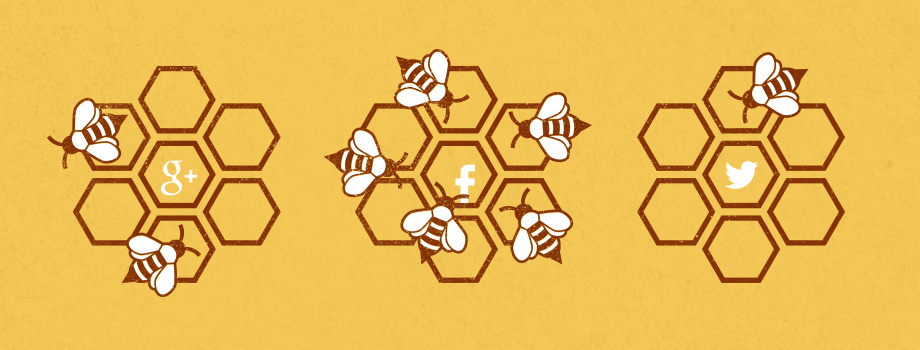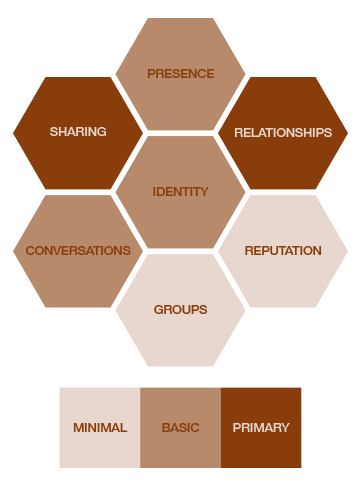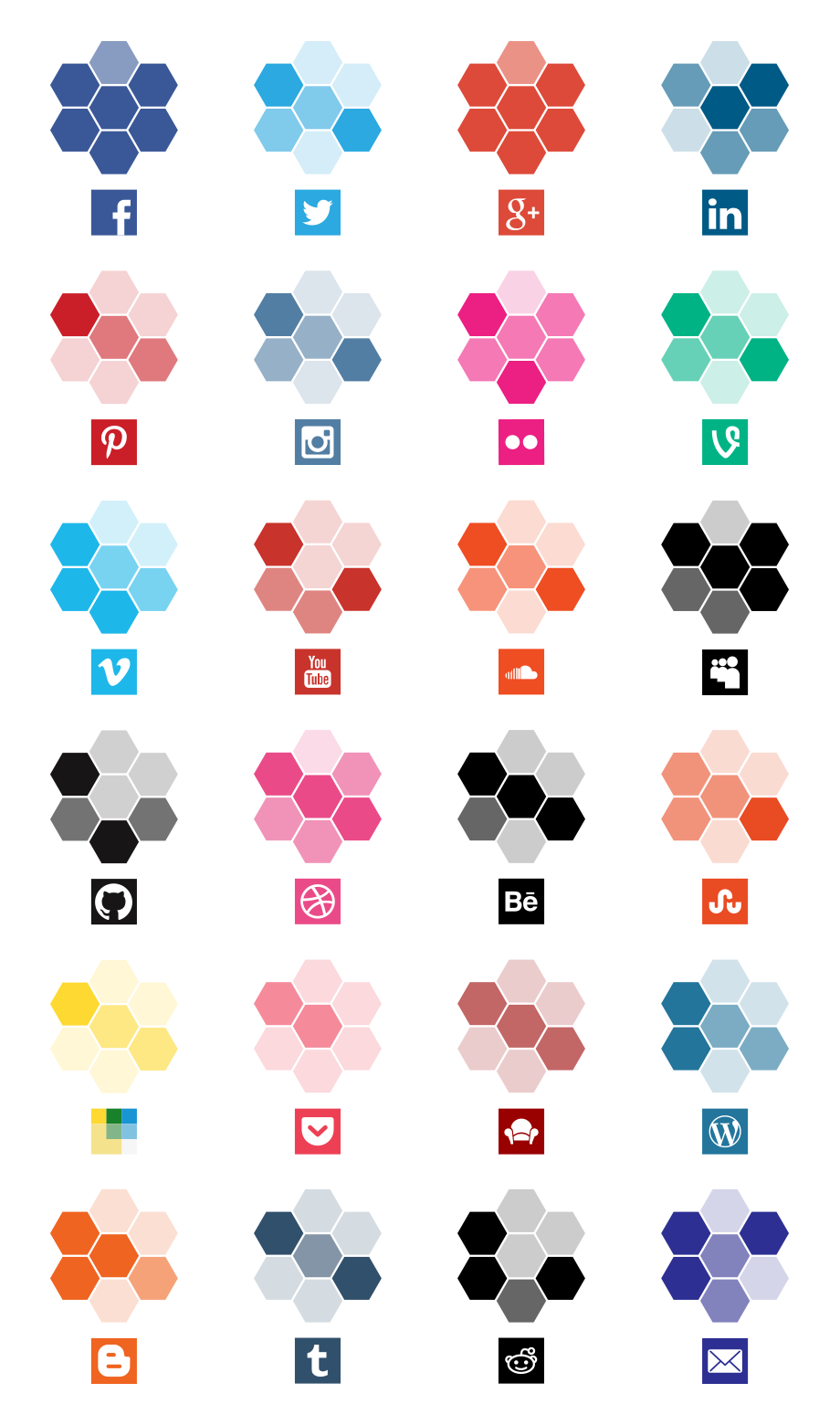
Social media has permeated just about every aspect of our digital lives. It can help us keep in touch with our friends, create a forum to discuss events around the world, discover and catalog who we are, guide us to new recipes, collect photos of other people’s pets, and also it can be harnessed to make selling our creative work easier. It’s this huge network of shared content that is user generated that really makes these sites so wonderfully powerful and even hypnotic. However, not every social media platform lends itself to being a podium for getting your endeavors out in the market. Certain qualities of a platform lend themselves well to being a great doorman for selling online.
When designing nibl, I wanted to let users easily utilize their own social media connections to further develop the impact of selling their music, photos, videos, files, links, code, whatever on nibl. Anything you want to sell on nibl can be shared through social media. But, just letting you share to the most popular sites wasn’t good enough, and I really wanted to find out which social media sites are the best to share your content. So I took inventory of many social sites and analyzed their features to determine which sites will help effectively get your content noticed.
Social Media Honeycomb
Let’s set the playing field. Researchers at Vancouver’s Simon Fraser University published a paper about the seven aspects that can exist in a social media environment and that is going to be the basis on which we evaluate the sites. Social media websites all tend have some basic functionality that makes them useful to those who participate. Even though all social sites have these core features, some focus on specific “honeycombs” more than others.
- Identity – how much information about the user can be shared with other users (username, contact info, actual name, location, etc.)
- Presence – a way of knowing who is online, available or otherwise nearby
- Relationships – a way of describing how users in the system are related (friends, followers, family, etc.)
- Reputation – a way of knowing the status of other people in the system (likes, views, ratings, all sorts of this)
- Groups – a way of forming communities of interest or categorizing relationships.
- Conversations – a way of talking to other people through the system (chat, messaging, comments)
- Sharing – a way of sharing things that are meaningful to participants (this can be found or user-generated content)

The categories are fairly straightforward, and now that we have the basic criteria for what makes a social media site a social media site, the next thing to do is see how much emphasis each social platform puts on each of the honeycombs and how that is beneficial to a person selling digital content. So let me explain the color coding of the honeycombs: The more saturated the color, the more robust the feature or more focus that platform has in that particular aspect of the honeycomb. The hue of the colors are just the based on the site’s own native colors as a reference.
The Diagrams
Now before I get into the analysis of a few of the different sites, I just want to say that I do not actively use all of these different platforms. I did however, create an account on the few sites I was less familiar with and tried my hardest to hunt down all the features and explore as much as I could. Also, there are tons and tons of other social media sites out there for which I did not make a honeycomb diagram. I went with the most familiar to me and the most widely used. I also included just plain old email (the original social media) at the end, which is still one of the most popular ways content is shared on the web.
Prior to exploring all the sites, I assumed that the most popular social media platforms would already be a pretty good place to share nibl content. Sites like Facebook, Twitter, and Google+ have millions of users that could potentially see things that are shared or posted. I also assumed that many social sites that compete with each other would have similar honeycomb profiles. Sites like YouTube and Vimeo that both have certain types of features and services would probably emphasize them the same way just out of competition. I was a little surprised…

Hive Minded
The main thing to gather from these diagrams is how just about every social media has a primary focus on sharing, with the exceptions of the save for later type sites (Stumble Upon, Pocket, Readability). Those sites certainly do have sharing features, but their focus is more on the oddity of collecting for individual use. It is also worth noting that the most lacking features of any of the sites is the presence honeycomb. Facebook and Google+ were really the only two with this feature of knowing who is online and active. I was right in assuming that YouTube and Vimeo were similar, but also Vine and Instagram were similar to blog platforms like WordPress and Blogger, which was a surprise. Relationships were often less prevalent in the features of the sites, yet sites like LinkedIn, Facebook, Myspace, Google+, and email make extensive use of them. Flicker and Dribbble also have medium implementations of relationships for which you can note family and friends or start or join a team respectively.
For identity most social sites have your basic profile, but there are a few that function off of a person’s real name rather than a username. Of course you could use a pseudonym, but most people don’t. Many of the sites take advantage of conversations in the form of comments. However, just because the site has comments, doesn’t mean that the site’s common users actually participate, which reflects in the less saturated colors on Pinterest and Tumblr. Again the bookmarking sites of Pocket and Readability are lacking in the conversation department. Groups is another feature that most of the sites don’t put in too much stock. Google+ was built on categorizing people into different segments, and sites like Vimeo and Reddit have small and large collaborating communities within the main social atmosphere.
Now last but not least, reputation is just about everywhere as a primary feature. All the sites count likes, views, plays, and favorites in some form or another. Even the blogging platforms and the usually low-key bookmarking sites build off a sense of reputation. Besides sharing, reputation is the most primary feature of social media (even above identity!). This feature, when it comes to promoting content is not overwhelmingly relevant. While it may push your content up a bit on the page, these statistics are often generated by people who are not fully engaging in your share. 100 likes is often just that, with no sales. Sites with a more powerful reputation counter, like Twitter’s retweet, take the mundane up or down to a more active level – transforming it into more of an endorsement than just approval.
Key Bees
So really what makes a site great for promoting your products for sale? Well, it’s sharing ability, relationships, and conversations. Sharing is the most complicated of the three, since each site has some possibly wonderful or harmful restrictions. For instance, sites like YouTube, Vimeo, Vine, SoundCloud, Myspace, and Flickr really only let you share a specific type of content. So if you are trying to sell music, it would be smart to share your songs on SoundCloud and Myspace, where music is the main focus. However if you are trying to sell a WordPress template, you probably won’t get much traffic through Vine. Some sites are very much against sharing items for sale. Reddit users will likely downvote anything that remotely seems like advertising or promotional, so sharing there would take more creativity. Also, some sites like Behance, Dribbble, and Github don’t really have a mechanism to share directly, you will have to promote directly on those sites. So the safest places to share are sites like Facebook, Google+, Pinterest, Twitter, WordPress, Blogger, which allow for any type of content to be shared, especially links. These sites often give special treatment to shared links by including a photo or video as well as snippet of text to go with the link, which makes them more likely to be clicked on by those who see it. However, don’t think that sharing to those big sites is going to bring you as much traffic as the specialty social sites that match the content you are trying to sell.
Relationships are great. LinkedIn, Google+, and Facebook jump way higher on the “should share to” scale because you actually know the people who see what you share. You can easily cater the content to the people you know, which will result in more interested eyes and more sales. It’s the reason friends, family, coworkers, and neighbors are huge targets to sell Girl Scout cookies. People who know you often want you to succeed and can be your biggest benefactors and provide even more beneficial endorsements to friends of friends (and so on).
Facebook and Google+ turned out to have identical diagrams, both without a minimal hexagon for any category and only one medium for presence. Maybe this is just my experience with these two sites, but I find myself consuming the content intermittently, rather than being constantly active on the site. Sporadic use of a site for many people leads to less people being on the site at the same time, which de-emphasizes the effectiveness of live communication. Those features often end up as a simple leave a message system and a way to communicate with only one person specifically (which isn’t a large market). So really, the types of conversations that make for great sharing occur in the public arena, where not only do the active participants see the product and discussion, but the bystanders see it as well. Sites with active commenting and forums are best for getting the word out on your content. For that, WordPress, Blogger, Facebook, Google+, and Vimeo get the most results.
Poll-a-nation
While sharing ability, relationships, and conversations really make for a great site for shared content, it doesn’t guarantee that everything you share to sites with those features will be a big success. Polls generated by the Social Habit show that only about 33% of Americans follow a brand on social media, only about 56% of Americans actually have a social media profile of any kind, and only about 7% of Americans use social media to learn about a new brand (rather than a company’s website, Google searching, or online reviews). With that data in mind, just sharing to a site might not spark the huge buzz about your product as you want. But this is changing all the time. From 2011 to 2012 the percentage of people influenced on buying decisions from social media rose from 32% to 64% with Facebook being the most influential. Does this have to do with it’s primary honeycombs being in relationships and comment style conversations? I bet it does, and that huge jump in influence only proves how social sites are such a powerful tool for promoting digital goods.
So when you are deciding which social media platform to focus your attention, just remember that sites with comments and relationships are your best bet, and that the site’s ability to support the type of content you are sharing is a huge factor. So while Facebook and Google+ are a great place to share any type of content, you may have better results from a niche, where your type of content is the main focus. Really there are no bad places to share your content, but you will get much better results when you play to your content’s strengths. So save yourself a bunch of time, share effectively, then you can get back to creating the next great piece of content for people to nibl on.
[…] of day) can get more results for your shares. First, if you have not had a chance to read my post, Sharing and the Social Media Honeycomb, do so now. This post is a bit of an extension of that, but gets into the when rather than the why. […]